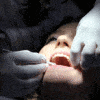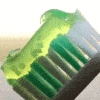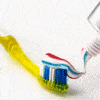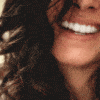Dazzling dental hygiene: the dos and the don’ts – words Al Woods
You don’t necessarily need expensive cosmetic dentistry to be the proud owner of a dazzling smile. Regular routine trips to the dentist and a good dental hygiene routine should keep your teeth and mouth in tip top condition. A winning smile doesn’t have to involve a full set of veneers.
An increasing number of dental practices are focusing on preventative dental care with dental hygiene at the heart of a healthy mouth and teeth. Dental care and dental hygiene should be taken just as seriously as your overall health.
In fact, our general health is at risk from poor oral health. Serious health problems, such as heart disease, strokes, premature births and other major conditions have been linked to poor oral health.
According to the Oral Health Foundation, 31 per cent of adults have tooth decay and 66 per cent of adults have visible plaque. They also found that nearly half the population are unhappy with their teeth.
If you dream of a dazzling smile, perhaps it’s time to give your dental hygiene an overhaul. Follow our dental hygiene dos and don’ts to give yourself the best chance of maintaining a clean and healthy smile. A great smile is hugely important for our self-confidence, relationships and success.
DON’T brush too hard
This is a common mistake many people make. It may seem logical that brushing hard with your toothbrush is more likely to remove plaque and debris, but research has found that hard brushing can actually damage the protective enamel on the teeth. Applying too much pressure can also cause a receding gum line, putting you at greater risk of tooth loss, sensitivity and bleeding gums.
DO use safe brushing techniques
It’s really important that we brush our teeth twice a day. Proper brushing takes at least 2 minutes. For a good brushing technique:
- Tilt the brush at a 45° angle against the gumline and sweep or roll the brush away from the gumline.
- Gently brush the outside, inside and chewing surface of each tooth using short back-and-forth strokes.
- Use short, gentle strokes, paying extra attention to hard-to-reach back teeth and areas around fillings, crowns and other restoration work.
- Brush the outer surfaces of your upper teeth, then your lower teeth.
- Brush the inner surfaces of your upper teeth, then your lower teeth.
- Brush the chewing surfaces.
DO rinse brush bristles after brushing
Microorganisms can build up on your toothbrush, both from your mouth and the environment. For this reason, be sure to rinse your toothbrush under running water after each use. Gently separate bristles so the water stream can remove toothpaste and other debris.
DO regularly change your toothbrush
Most dental professionals recommend you change your tooth brush every 3 months, or sooner if bristles are frayed. Clinical research shows that a new toothbrush can remove more plaque than one that is worn out. Some Oral B toothbrushes contain indicator bristles that fade, signalling when you need to replace them.
DON’T skip the dentist
According to the Oral Health Foundation 39 per cent of adults in England don’t visit a dentist regularly. Roughly 40 per cent of children still do not visit a dentist every year. Along with good daily oral hygiene, visiting the dentist twice a year or more is imperative for optimum oral health. Some oral ailments require professional help and your dentist is the best person to handle those kinds of complaints. If the cost of dental treatment is putting you off, perhaps try to find an affordable dental plan.
DO eat healthier foods
Avoiding the foods that cause tooth decay is one of the most effective things we can do to preserve the integrity of our teeth. Tooth decay is caused by bacteria in our mouths. Sugary foods and drinks are consumed by the bacteria, which then produce acid as a by-product. It’s this acid that attacks our teeth, slowly dissolving the enamel and creating holes or cavities.
DO floss between teeth
Cleaning in between the teeth is an important part of oral hygiene. Brushing can’t get down between the teeth. Regular flossing removes about 40 per cent of the plaque that builds up there. Alternatively, tooth picks or interdental brushes can be used with positive effect. You should floss once a day, the best time being just before you go to bed.
Dazzling dental hygiene: the dos and the don’ts – words Al Woods























